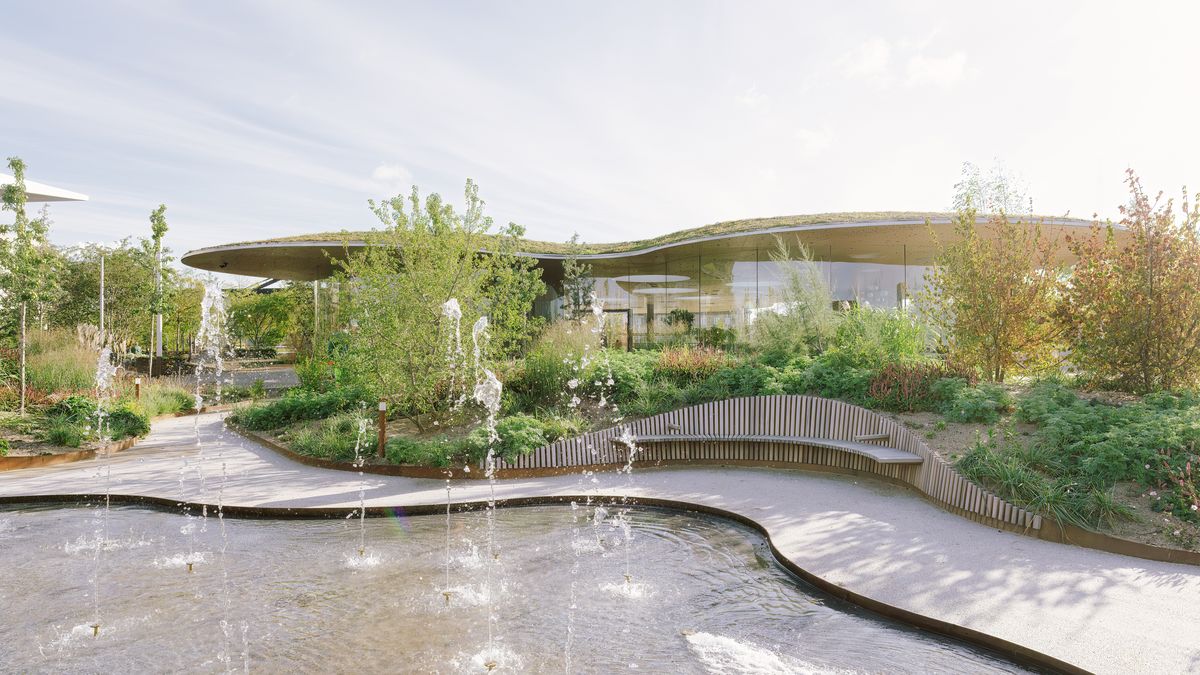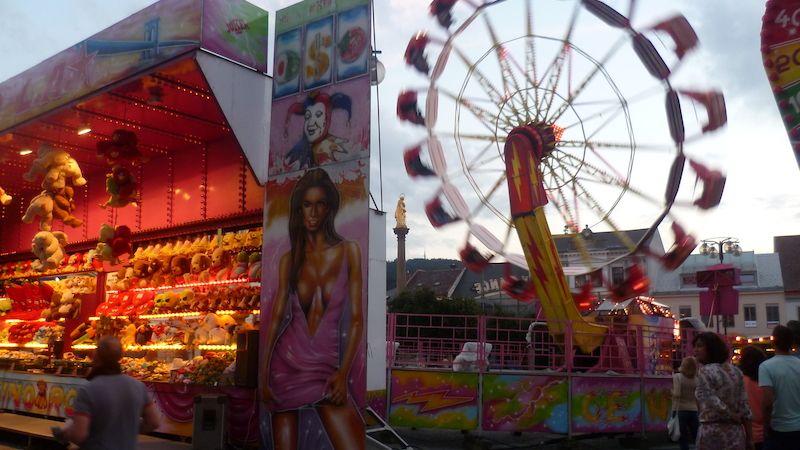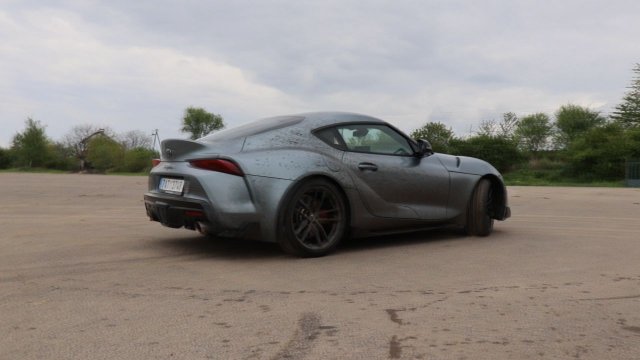Right in the heart of Copenhagen’s harbour, in the historic center of the city, next to the Royal Danish Opera house there is an almost square area, which was once part of an industrial area belonging to the port. After the construction of the Opera was completed (almost 20 years ago), the inhospitable place was cleaned up and the lawn remained. That’s better, but still not much…
Four years ago, the city government announced a city planning competition for a new form of this space, in which they wanted to create a nice and functional park. The winners of the competition were architects from local studio Cobe. They come with a very attractive visual design, where each garden element has a pleasant rounded shape, as is common in nature.
However, a very important element is the underground parking lot, which is perfectly hidden from the eyes of passers-by. The heart of the garden is a large greenhouse with a cafe, and right in the center there is a large winding staircase that leads to the underground parking lot. Lighting and operation of the greenhouse is provided by solar panels located on the roof of the Opera House. The architects also created a covered passage for park visitors.
A suburban park will be created at the confluence of the Vltava and Berounka rivers, which will be 13 times larger than Stromovka
However, the Opera house is also very important to the park in other ways. All rainwater collected on the roof is channeled into an underground reservoir, which is then pumped to irrigate the garden. The park itself is designed to collect rainwater well. Therefore, there are no heavily concreted areas, the paths are filled with gravel, so water can seep into the ground.
The entire garden is the size of three football fields and consists of six gardens planted in the spirit of different biotopes in different parts of the world – a North American forest, a Danish oak forest, a Nordic forest, an oriental garden, an English Garden and a subtropical garden, which is located in the center of the house glass. Each park has unique elements meant to delight park visitors. Be it a fountain, lotus pond, pond with rain, etc. Winding paths weave between the raised flower beds so that visitors can enjoy different corners with different atmospheres.
Photo: Francisco Tirado
However, the connecting feature of the entire garden is the fact that it is designed in such a way that greenery can be seen in it throughout the year and hence it becomes something attractive all year round. In spring the park blooms with a rich color palette, summer brings different shades of green, autumn reds and yellows, and in winter the park is dominated by green pine trees and a frozen lake. The variety of plant types and their varying sizes also provide a home for birds and insects.
“Designed for recreation, relaxation and contemplation, the park provides a much-needed green oasis for the city. Walking along it, you feel like you have left the city and immersed in nature. You almost forget that you are in the middle of a busy city center,” explains architecture studio founder Dan Stubbergaard.
More than 600 trees, 80,000 flowers and shrubs and 40,000 flower bulbs from all over the world are planted in this garden. Overall, visitors can enjoy the beauty of more than 200 plant species, both exotic and domestic.
survey
Do you want a park like this in your city?
Something similar…
I wouldn’t care, especially some.
No, we need a park, but a different park.
A total of 282 readers voted.
Ostrava’s second largest park is undergoing a transformation

“Unapologetic social media guru. General reader. Incurable pop culture specialist.”







